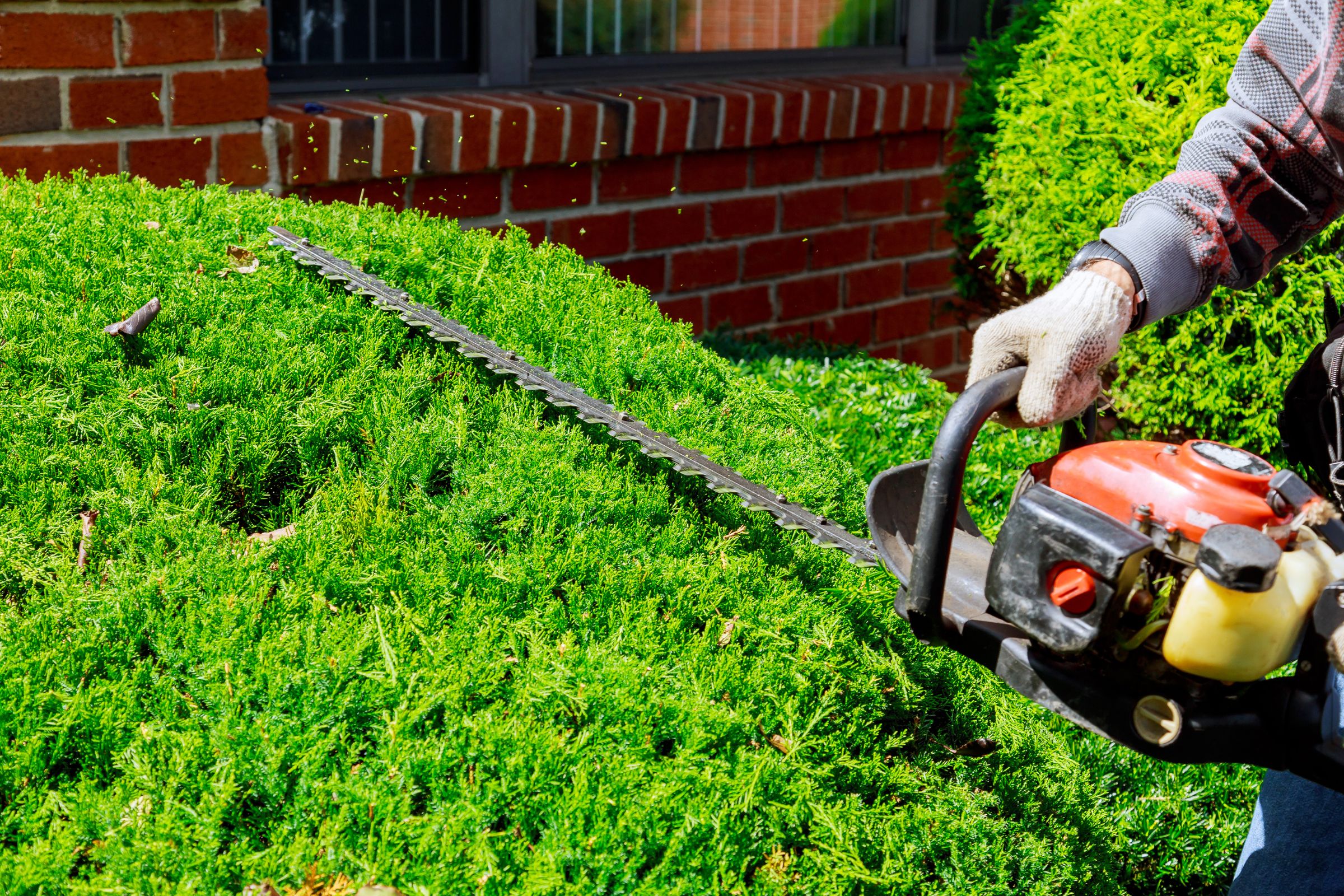Table of Contents
Related Articles
Spring Safety Guide: Essential Tips For Using Landscape Equipment Safely

Spring in Massachusetts transforms the grounds of independent schools and cultural institutions into vibrant spaces, but maintaining them requires careful use of landscape equipment like blowers, lawn mowers, and hedge trimmers. At the Independent Schools Compensation Corporation (ISCC), a self-insured workers’ compensation group serving Massachusetts’ independent schools and cultural organizations, we emphasize safety to keep groundskeeping teams secure. This comprehensive guide merges safety protocols for three key tools, presenting critical instructions, hazards, and protective measures with detailed commentary to ensure your staff operates confidently and safely.
Learn more about the broader steps for ensuring OSHA compliance.
Safe Operation Of Gasoline-Powered Blowers
Blowers are indispensable for clearing leaves and debris, but their power demands respect. Proper training is the cornerstone of safe use, ensuring operators understand the equipment’s features and limitations. A thorough review of the operator’s manual, paired with a hands-on skills evaluation, equips staff to handle blowers without endangering themselves or others.
Hazards To Watch For
Blowers introduce several risks that require vigilance:
- Exposing the public to noise and flying debris, which can disrupt or harm bystanders.
- Property damage from debris striking windows or vehicles.
- Foreign objects in the eyes, such as dirt or small particles.
- Slopes, uneven, or unstable ground leading to slips, trips, or falls.
- Diverted attention, focusing on blowing rather than footing.
- Exposure to insects, sun, and allergens in outdoor settings.
- Noise and vibration, which can cause hearing damage or fatigue.
- Exhaust gases like carbon monoxide in poorly ventilated areas.
- Contact with gas, oil, or other fluids.
- Burns from hot exhaust systems.
These hazards highlight the need for preparation and awareness. For instance, directing airflow away from people and adjusting blower speed can reduce debris scatter, while frequent breaks mitigate vibration and noise exposure.
Pre-Use Protocols
Before starting, a meticulous inspection ensures the blower is safe:
- Inspect and test per manufacturer requirements to confirm safety devices function.
- Ensure all guards are in place and the equipment is in good condition.
- Follow the manufacturer’s maintenance schedule.
- Complete a written field inspection form to document readiness.
- Do not use if unsafe conditions are present.
These steps catch issues like loose parts or faulty guards, preventing accidents. Documentation also creates accountability, reinforcing a culture of safety.
Required Personal Protective Equipment (PPE)
Proper gear shields operators from blower-specific risks:
- Body: Coveralls or long-sleeve shirt and long pants.
- Feet: Anti-slip, ankle-height leather boots.
- Hands: Heavy work gloves (leather or anti-vibration).
- Eyes: Goggles or safety glasses with side shields or wrap-around lenses, possibly shaded.
- Ears: Ear plugs or muffs for noisy environments.
Optional PPE, based on conditions, includes:
- Head: Hard hats for overhead hazards; sunhats for UV protection.
- Body: Rain gear for wet weather; high-visibility clothing near traffic.
- Feet: Rubber boots with anti-slip soles in wet conditions.
- Face: Goggles in dry conditions; face shield with goggles/safety glasses for flying particles.
- Hands: Nitrile gloves for chemical exposure.
- Lungs: Disposable dust mask (N95) voluntarily.
This PPE lineup protects against noise, debris, and environmental factors. For example, anti-vibration gloves reduce strain during prolonged use, while high-visibility clothing ensures operators are seen near roads.
Maintenance & Safe Operation
Maintenance is critical to prevent breakdowns or injuries:
- Do not work on running or hot equipment; shut off and cool down.
- Disconnect the spark plug wire before adjustments, maintenance, or repairs.
- Check for loose, broken, or damaged parts; repair or replace before use.
- Only authorized, qualified mechanics should perform repairs.
When operating, use blowers in open areas to avoid fume buildup, stay mindful of terrain, and take breaks to reduce fatigue. These practices keep both the operator and the equipment in top form.
Lawn Mower Safety Practices
Lawn mowers, whether walk-behind or riding, are spring essentials but carry significant risks. Training, including a manual review and skills evaluation, ensures operators can navigate the cutting deck, controls, and safety features effectively. A pre-mowing survey of the area—removing sticks, rocks, or sprinkler heads—prevents equipment damage or projectile injuries.
Hazards To Address
Mowers present a range of dangers:
- Noise & vibration exposure.
- Exhaust gases like carbon monoxide in confined spaces upon start and shutdown (i.e. garage/shed).
- Burns from hot engine parts & exhaust systems.
- Shut off engines when unattended.
- Mower blades/engine must be raised and disengaged when moving between jobs and when passing over curbs, gravel, or similar surface.
- Set blade height above one inch to avoid striking soil or rocks.
- Mow slopes per manufacturer guidelines, using walk-behind mowers for steep areas.
- Mow in daylight, taking breaks to avoid heat stress.
- Shut off and disconnect power before blade inspections or repairs.
- Refuel gas mowers when cool, outdoors, away from ignition sources.
- For electric mowers, use grounded cords, avoid wet conditions, and ensure the battery is fully charged.
Walk-behind mowers should stay level, mowing across slopes to reduce slip risks. Riding mowers require disengaged transmissions at startup and no passengers to maintain stability.
Hedge Trimmer Safety Measures
Hedge trimmers deliver precision but pose unique risks due to their sharp blades and power sources. Training, including manual review and skills checks, ensures operators can handle gas or electric models safely. A stable stance and controlled motions prevent overreaching or blade mishaps.
Hazards To Mitigate
Hedge trimmers introduce several concerns:
- Mechanical hazards from blades and moving parts.
- Electrical hazards from cords or power sources.
- Flying wood chips or debris.
- Slopes or uneven ground causing slips or falls.
- Foreign objects in the eyes.
- Repetitive motion injuries.
- Outdoor exposure to insects, sun, and allergens.
- Noise and vibration.
- Exhaust gases in confined spaces.
- Contact with gas, oil, or fluids.
- Burns from exhaust systems.
Repetitive motions can strain wrists or shoulders, while cords on electric models require constant awareness to avoid cutting them.
Pre-Use Protocols
Preparation is key to safe trimming:
- Inspect and test per manufacturer requirements to ensure safety devices work.
- Confirm guards are in place and equipment is in good condition.
- Follow the manufacturer’s maintenance schedule.
- Complete a written field inspection form.
- Do not use it if unsafe conditions exist.
These checks catch issues like loose blades or worn cords, ensuring reliability. A written record reinforces diligence.
Required Personal Protective Equipment (PPE)
Protective gear is critical for trimmer operators:
- Body: Coveralls or snug long-sleeved shirt and pants.
- Feet: Steel-toed, anti-slip, ankle-height leather boots.
- Hands: Heavy leather or anti-vibration gloves.
- Eyes: Goggles or safety glasses with side shields or wrap-around lenses, possibly shaded.
- Ears: Ear plugs or muffs for noisy equipment.
- Legs: Chaps for added protection.
Optional PPE includes:
- Head: Hard hats for overhead hazards; sun hats for sun protection.
- Body: Rain gear for wet weather; high-visibility clothing near traffic.
- Feet: Rubber boots with anti-slip soles in wet conditions.
- Face: Face shield or mesh screen with goggles/safety glasses for flying particles.
- Hands: Nitrile gloves for chemical exposure.
- Lungs: Disposable dust mask voluntarily.
- Skin: Sunscreen and increased water intake.
Chaps and anti-vibration gloves are particularly valuable, reducing leg injuries and strain. High-visibility clothing ensures safety near traffic.
Operating Safely
Safe trimming requires careful technique:
- Hold gas-powered trimmers firmly on the ground when starting.
- Use lopping shears for thick branches first.
- Make multiple small passes for extensive trimming.
- Trim hedge sides before tops, using arc-like motions.
- Limit use to 2-3 hours daily, rotating tasks to reduce strain.
- Avoid audio headphones; wear hearing protection.
- Use high-visibility clothing and traffic control devices near roads.
- Refuel gas trimmers when cool, wiping up spills.
- Clear the area of hazards like wires or roots before starting.
Controlled arcs and limited daily use prevent fatigue and injury. For electric trimmers, keeping the cord clear of blades is critical.
Building a Culture Of Safety
Across blowers, mowers, and trimmers, common threads emerge: thorough training, diligent maintenance, consistent PPE use, and situational awareness. These principles create a safety framework that protects groundskeepers and enhances efficiency. ISCC supports our members with resources like training guides and inspection forms to embed these practices into daily operations.
View our Inspection Checklist Template and download a copy for your institution to track the safety status of your equipment.
Spring Forward With Confidence
As Massachusetts’ landscapes awaken, your groundskeeping team can maintain beautiful, safe spaces by following these detailed safety protocols. ISCC is here to help independent schools and cultural institutions navigate the challenges of spring maintenance. Visit our website to access tools and support for a secure season. Let’s make spring both productive and safe.




